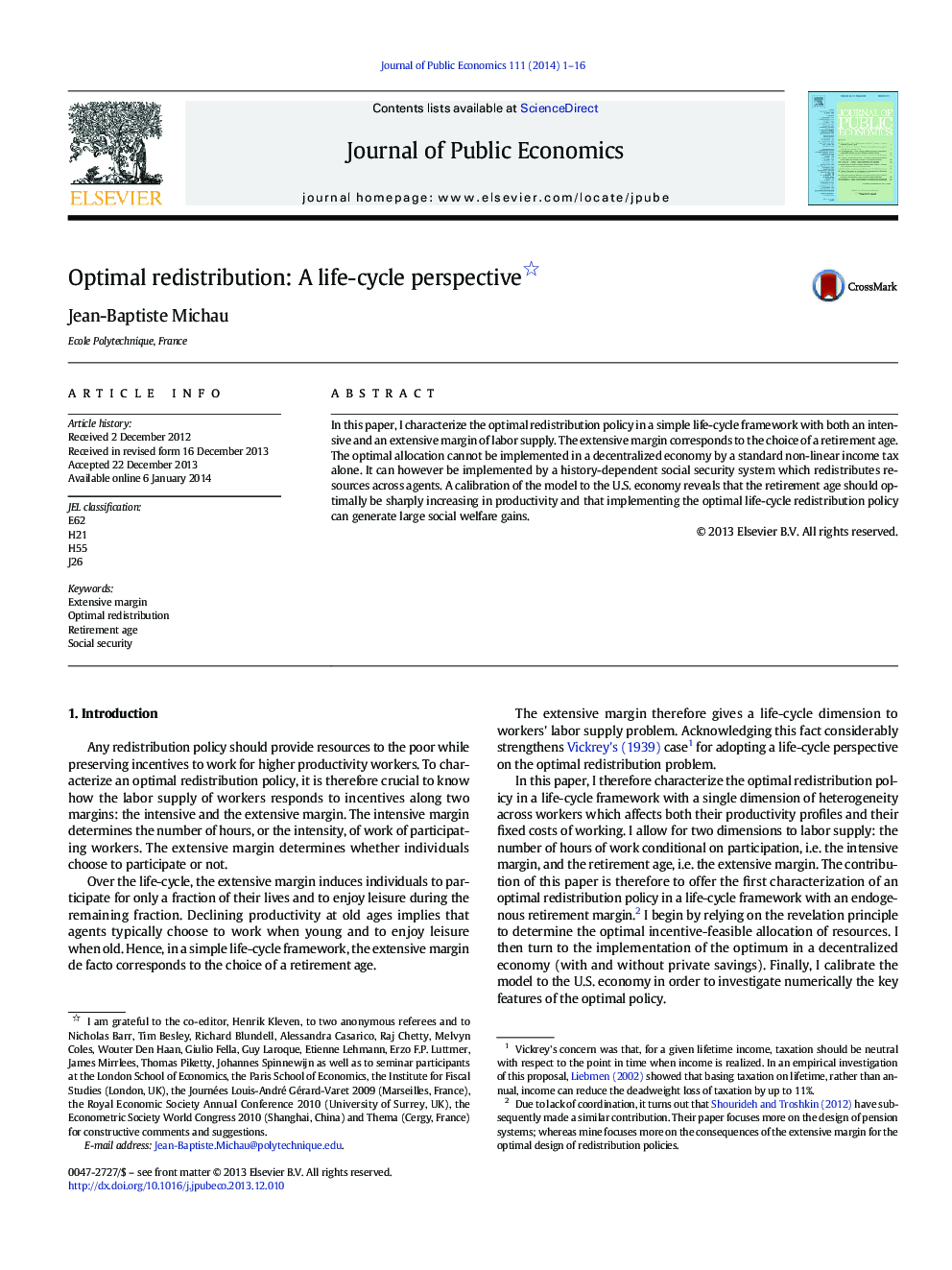| Article ID | Journal | Published Year | Pages | File Type |
|---|---|---|---|---|
| 969740 | Journal of Public Economics | 2014 | 16 Pages |
•I characterize the optimal life-cycle redistribution policy.•The extensive margin corresponds to the choice of a retirement age.•Higher productivity individuals should have longer careers.•Implementing the optimal policy in the U.S. can generate large social welfare gains.•The optimal allocation is implementable with and without private savings.
In this paper, I characterize the optimal redistribution policy in a simple life-cycle framework with both an intensive and an extensive margin of labor supply. The extensive margin corresponds to the choice of a retirement age. The optimal allocation cannot be implemented in a decentralized economy by a standard non-linear income tax alone. It can however be implemented by a history-dependent social security system which redistributes resources across agents. A calibration of the model to the U.S. economy reveals that the retirement age should optimally be sharply increasing in productivity and that implementing the optimal life-cycle redistribution policy can generate large social welfare gains.
